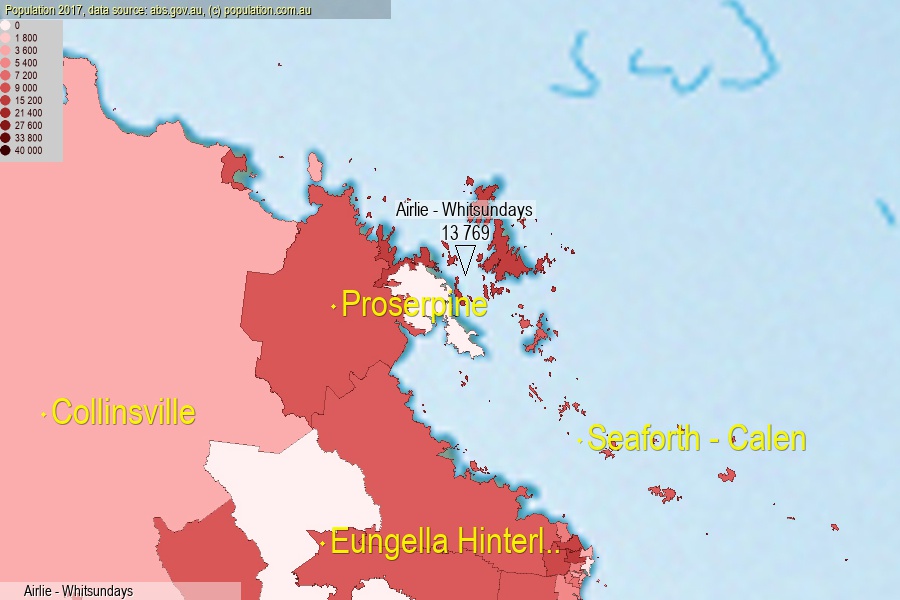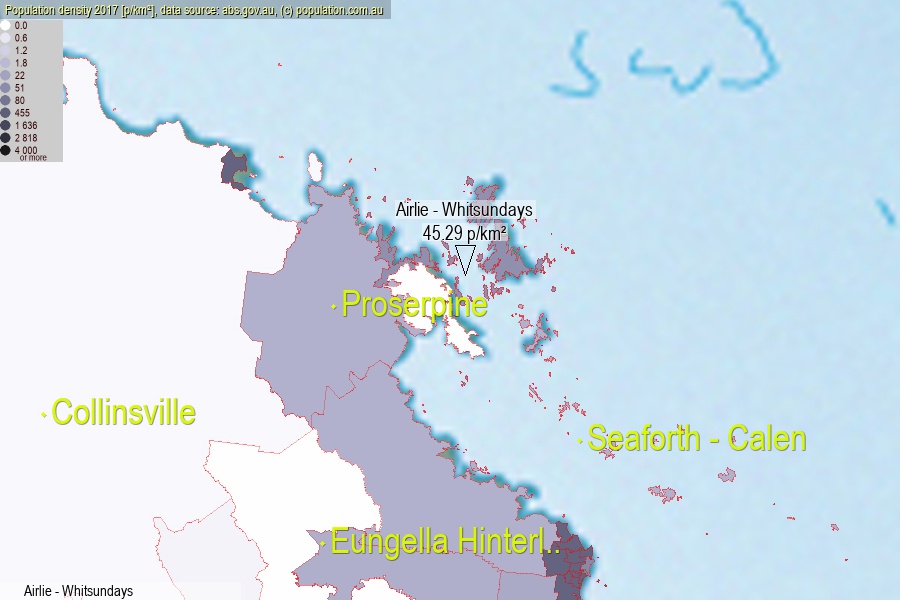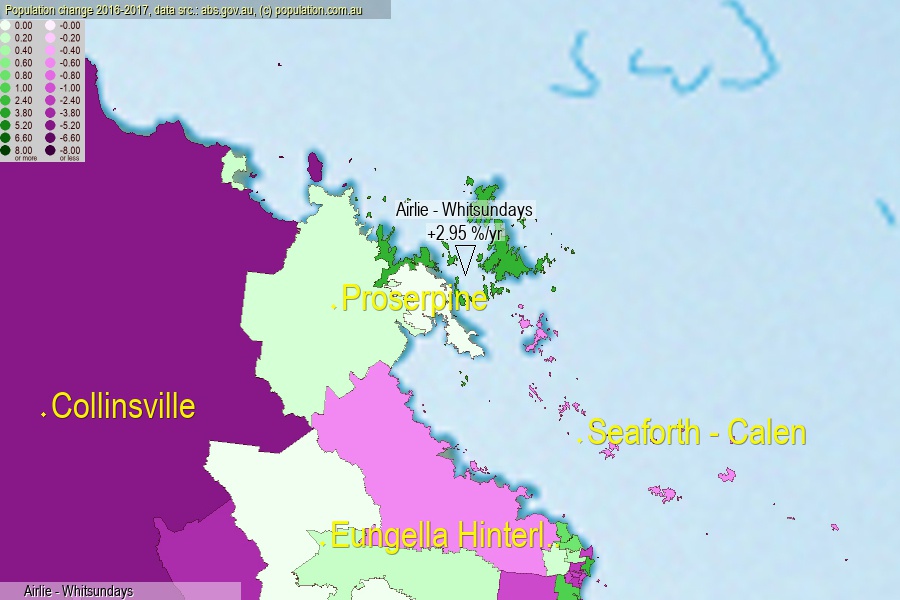 population.com.au
population.com.auLast official estimated population of Airlie - Whitsundays (as Statistical Area Level 2) was 13 769 people (on 2017-06-30)[2]. This was 0.06% of total Australian population and 0.276% of QLD population. Area of Airlie - Whitsundays is 304.00 km², in this year population density was 45.29 p/km² . If population growth rate would be same as in period 2016-2017 (+2.95%/yr), Airlie - Whitsundays population in 2025 would be 17 369. [0]



Click to enlarge. Airlie - Whitsundays is located in the center of the images.
Population [people], population density [p./km²] and population change [%/year] [2]
View borders » (new window) [4]
[1991-1992] +2.18 %/Yr.
[1992-1993] +4.19 %/Yr.
[1993-1994] +3.47 %/Yr.
[1994-1995] +6.70 %/Yr.
[1995-1996] +5.72 %/Yr.
[1996-1997] +1.70 %/Yr.
[1997-1998] +1.26 %/Yr.
[1998-1999] +0.68 %/Yr.
[1999-2000] +2.54 %/Yr.
[2000-2001] +4.20 %/Yr.
[2001-2002] +3.81 %/Yr.
[2002-2003] +2.74 %/Yr.
[2003-2004] +2.58 %/Yr.
[2004-2005] +4.89 %/Yr.
[2005-2006] +4.30 %/Yr.
[2006-2007] +3.04 %/Yr.
[2007-2008] +3.14 %/Yr.
[2008-2009] +2.18 %/Yr.
[2009-2010] +1.60 %/Yr.
[2010-2011] +1.53 %/Yr.
[2011-2012] +5.67 %/Yr.
[2012-2013] +4.54 %/Yr.
[2013-2014] +3.72 %/Yr.
[2014-2015] +3.28 %/Yr.
[2015-2016] +2.92 %/Yr.
[2016-2017] +2.95 %/Yr.
[0] Calculated with linear interpolation from officially estimated population
[1] Read more about SA2 and Australian Statistical Geography Standard (ASGS) on abs.gov.au
[2] Population data from Australian Bureau of Statistics (Population and density: 2017; change: 2016-2017)
[3] Digital Boundaries: Australian Statistical Geography Standard (ASGS) 2016.
[4] Border coordinates are simplifyed using Ramer-Douglas-Peucker algorithm.